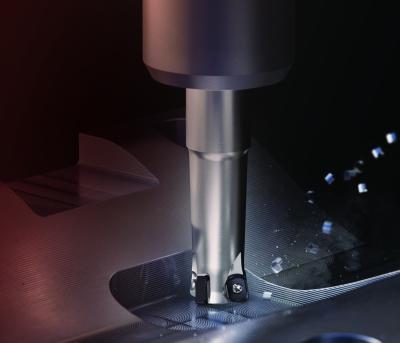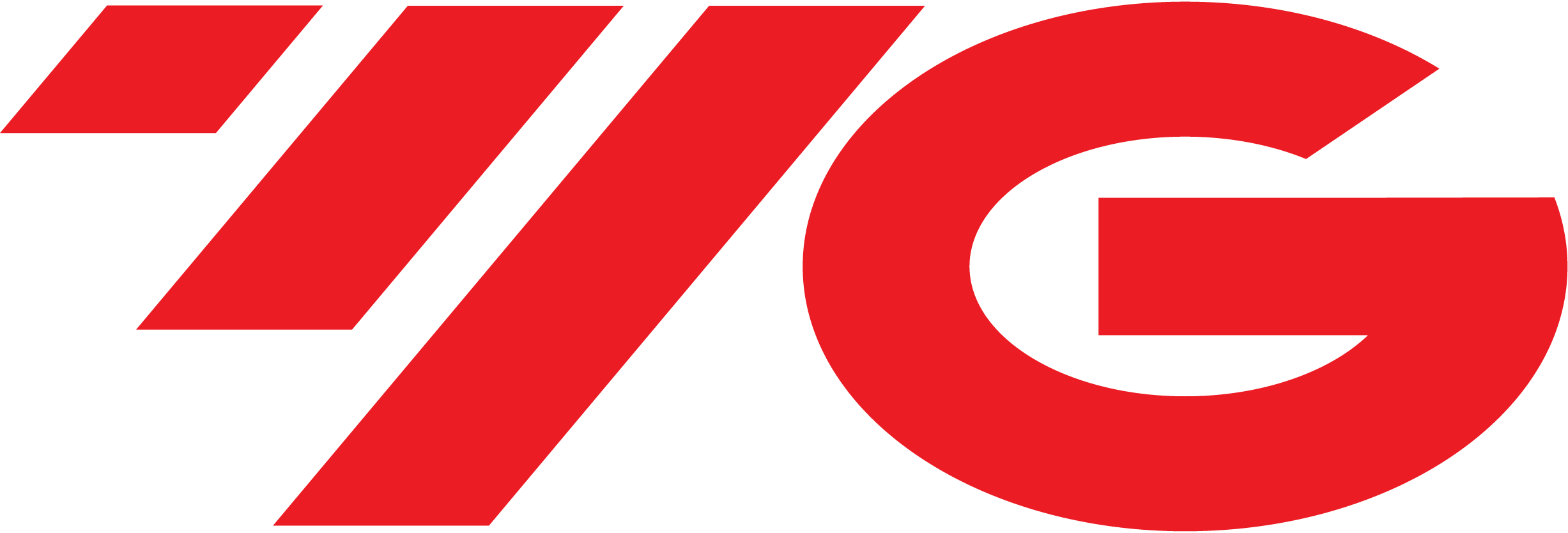
The YG-1 ENMX High-Feed Mill 4 is a new high-feed milling series developed to meet the most stringent demands of versatility, productivity and process stability for today’s applications. These types of tools are commonly used in mold & die, power generation and a variety of applications and materials in general machining markets. The unique YG-1 ENMX High-Feed Mill 4 concept provides the ideal choice for high-feed milling with small-diameter tools.
The unique thickness of the YG-1 ENMX insert offers a series of benefits. First, YG-1 makes the inserts 20-25% thicker than others on the market. This allows normal flank wear to develop without encroaching on the secondary edge and results in full use of all four edges for a more economical solution.
Greater insert thickness also lends itself to the most stable clamping, ensuring predictable and secure machining and longer tool life in the toughest applications. Also, the thicker negative insert has a positive rake angle that improves chip evacuation and reduces machining load.
In addition, YG-1’s corner protection design enhances rigidity while increasing tool life with the chip-breakers’ optimized geometry.
The ENMX cylindrical cutter is available in diameters from 16mm to 32mm (0.75” to1.25”). Shell mills are available in 40mm to 50mm (1.5” to 2”) diameters.
View a video.
Contact Details
Related Glossary Terms
- flank wear
flank wear
Reduction in clearance on the tool’s flank caused by contact with the workpiece. Ultimately causes tool failure.
- gang cutting ( milling)
gang cutting ( milling)
Machining with several cutters mounted on a single arbor, generally for simultaneous cutting.
- milling
milling
Machining operation in which metal or other material is removed by applying power to a rotating cutter. In vertical milling, the cutting tool is mounted vertically on the spindle. In horizontal milling, the cutting tool is mounted horizontally, either directly on the spindle or on an arbor. Horizontal milling is further broken down into conventional milling, where the cutter rotates opposite the direction of feed, or “up” into the workpiece; and climb milling, where the cutter rotates in the direction of feed, or “down” into the workpiece. Milling operations include plane or surface milling, endmilling, facemilling, angle milling, form milling and profiling.
- milling machine ( mill)
milling machine ( mill)
Runs endmills and arbor-mounted milling cutters. Features include a head with a spindle that drives the cutters; a column, knee and table that provide motion in the three Cartesian axes; and a base that supports the components and houses the cutting-fluid pump and reservoir. The work is mounted on the table and fed into the rotating cutter or endmill to accomplish the milling steps; vertical milling machines also feed endmills into the work by means of a spindle-mounted quill. Models range from small manual machines to big bed-type and duplex mills. All take one of three basic forms: vertical, horizontal or convertible horizontal/vertical. Vertical machines may be knee-type (the table is mounted on a knee that can be elevated) or bed-type (the table is securely supported and only moves horizontally). In general, horizontal machines are bigger and more powerful, while vertical machines are lighter but more versatile and easier to set up and operate.
- rake
rake
Angle of inclination between the face of the cutting tool and the workpiece. If the face of the tool lies in a plane through the axis of the workpiece, the tool is said to have a neutral, or zero, rake. If the inclination of the tool face makes the cutting edge more acute than when the rake angle is zero, the rake is positive. If the inclination of the tool face makes the cutting edge less acute or more blunt than when the rake angle is zero, the rake is negative.

